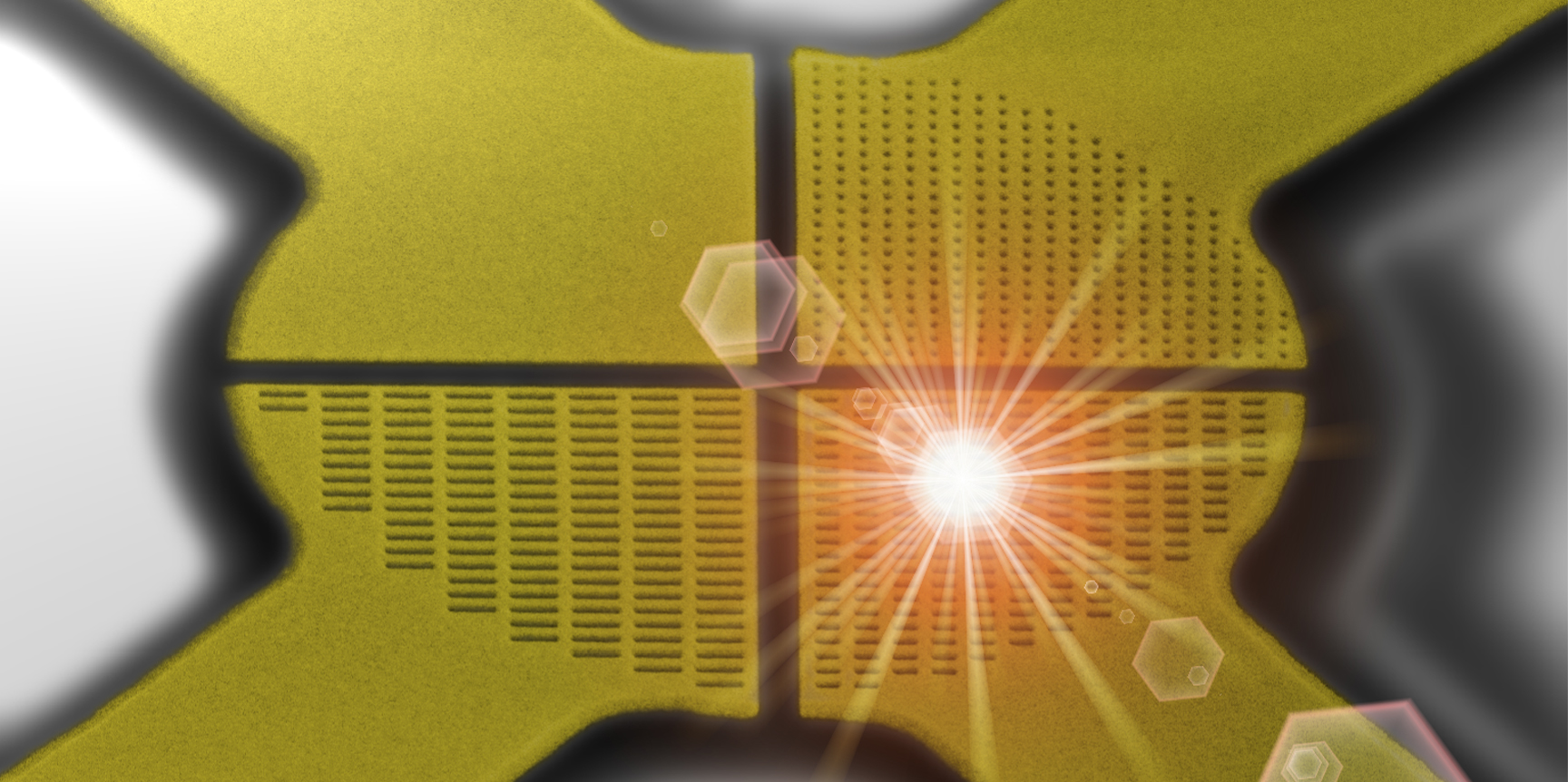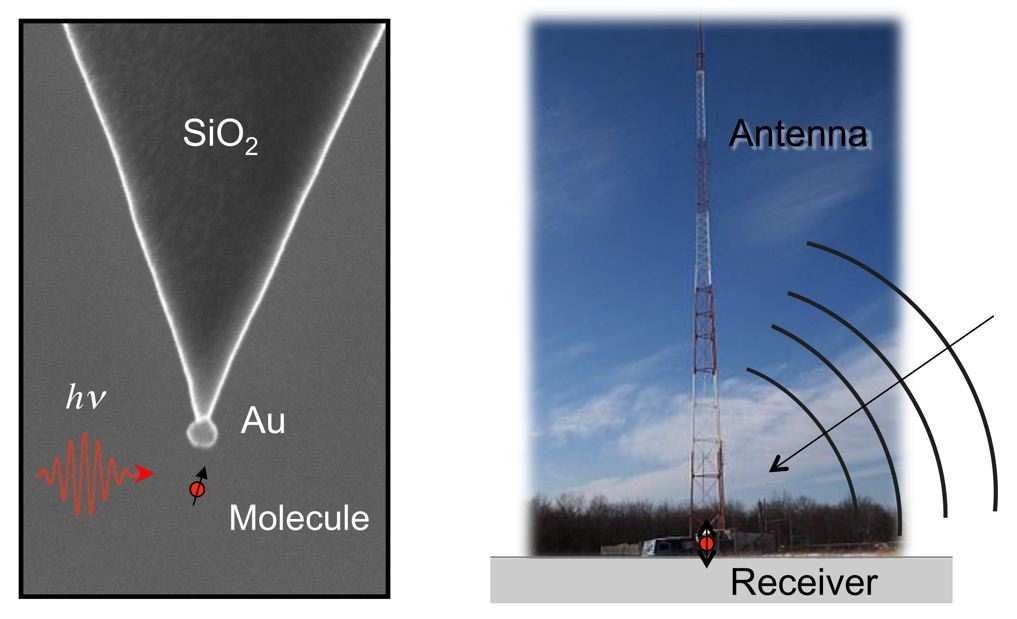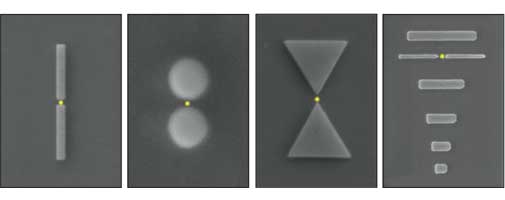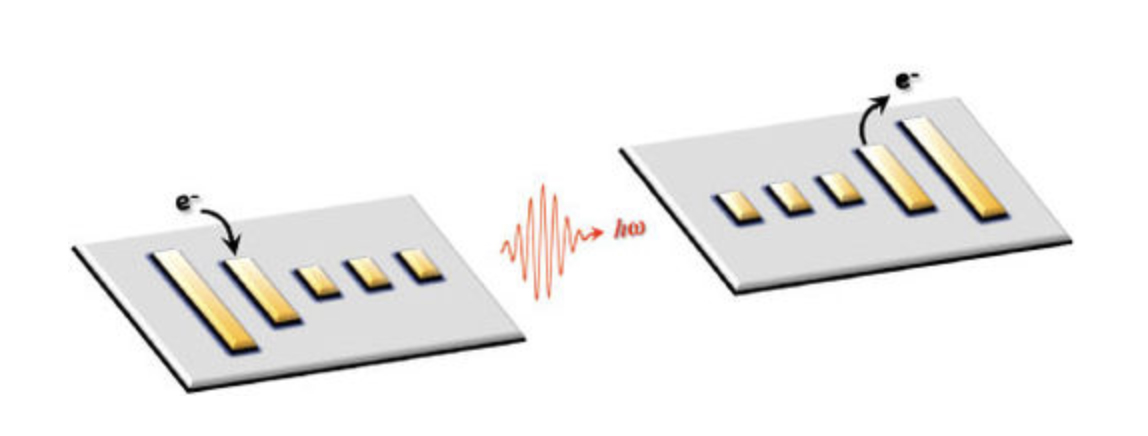Optical Antennas

Radiowave and microwave antennas are an enabling technology in cellular phones, satellite communication, and many other devices which use electromagnetic radiation. However, their optical analogue is basically non-existent in today’s technology. Instead, optical radiation is manipulated by redirecting the wavefronts with lenses and mirrors. Consequently, because of diffraction, it appears that optical fields cannot be localized to dimensions much smaller than the optical wavelength. Optical antennas are a solution to the mismatch between the small dimensions of nanoscale devices and the length scale associated with optical wavelengths.
The figure below shows the analogy of optical and radiowave antennas. The optical antenna is represented by a 80nm gold nanoparticle, which concentrates incoming optical radiation on a quantum receiver (a single molecule). Optical antennas consisting of plasmonic materials provide extreme light localization and small mode volumes, thereby boosting the sensitivity and signal-to-noise ratio in applications ranging from single photon sources to photodetection. Optical antennas can also be employed to efficiently control and manipulate light on the nanometer scale and to achieve directional emission.

In recent years, various optical antenna designs have been studied, including particle antennas, gap antennas, and Yagi-Uda antennas (see SEM images on the left). However, most of these antennas were studied on a ’light-in, light-out’ basis, that is, laser light is sent in to excite an emitter (e.g. molecule or quantum dot) and light is sent out in form of fluorescence or scattering. However, in the traditional radiofrequency and microwave regime, antennas are typocally used to convert electromagnetic radiation into electric currents, and vice versa. There are only a few studies that report the antenna-assisted conversion of optical radiation into electrical currents.

The figure below illustrates an antenna-coupled electro-optical interconnect that includes all the desired properties of light-emitters and photodetectors: A transmitting antenna converts a single input charge to a photon that propagates into a predefined direction, and a receiving antenna converts the photon back to an electron. Evidently, the transmitting antenna defines a single photon source and the receiving antenna represents a single photon detector.

Antenna-assisted electro-optical transduction can draw inspiration from high-frequency devices such as infrared whisker diodes based on metal-oxide-metal junctions, and from photon emission in scanning tunnelling microscopy. Such infrared whisker diodes provide a route towards receiving electro-optical antennas, whereas scanning tunnelling microscopy defines a possibility for transmitting electro-optical antennas. The problem in metal-oxide-metal diodes is the high-frequency cut-off, which depends on the capacitance of the metal-oxidemetal junction. Reliable operation has not yet been extended into the optical frequency regime. On the other hand, in photon emission scanning tunnelling microscopy, electrons excite surface plasmons, which then decay radiatively. This process has a low efficiency, and reliable operation at the device level has not yet been established. Nevertheless, emerging nano-fabrication tools make it possible to engineer and control ever-smaller length scales, and it can be expected that electro-optical antennas based on electron- plasmon coupling will be realized at some point.
Related publications:
[1] L. Novotny, ”From near-field optics to optical antennas,” Physics Today, 47-52 (July 2011).
[2] P. Bharadwaj, B. Deutsch, and L. Novotny, ”Optical antennas,” Adv. Opt. Photon. 1, 438-483 (2009).
[3] C. Höppener, P. Bharadwaj and L. Novotny, ”Self-similar gold-nanoparticle antennas for a cascaded enhancement of the optical field,” Phys. Rev. Lett. 109, 017402 (2012).
[4] D. W. Pohl and L. Novotny, ”Stacked optical antennas,” Appl. Phys. Lett. 98, 023111 (2011).
[5] L. Novotny and N. F. van Hulst, ”Antennas for light,” Nature Phot. 5, 83-90 (2011).
[6] P. Bharadwaj, A. Bouhelier and L. Novotny, ”Electrical excitation of surface plasmons,” Phys. Rev. Lett. 106, 226802 (2011).
[7] L. Novotny, “Effective wavelength scaling for optical antennas,” Phys. Rev. Lett. 98, 266802 (2007).
